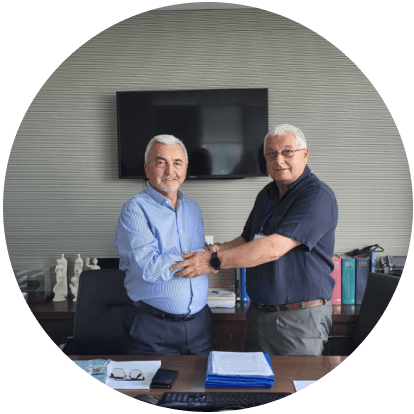The EU may need approximately an additional 100 bcm/year of gas by 2025 according to the Paris Base International Energy Agency and is looking for secure and independent sources for its future needs. Efforts to reduce Europe's high gas energy dependency rates may be intensified, especially for the most dependent Member States.
Hydrocarbon resources in the Eastern Mediterranean present opportunities for economic development, growth, jobs, energy security, regional cooperation, peace and prosperity. Cyprus offers access for the resources in the region providing an open, European, business-friendly environment governed by the rule of law.
With Vasilikos as a hub, by 2025 East Med could be in a position to export over 25 million tonnes LNG (35 bcm) per year, with Europe as its target destination.
All options to transport gas from Eastern Mediterranean to the Union should be kept open, from the already identified Projects of Common Interest (PCIs) consisting of bringing Cyprus gas as LNG or through a pipeline to Europe.
On 14 October 2013, the European Commission has adopted a list of 248 key energy infrastructure projects. These projects have been selected by twelve regional groups established by the new guidelines for trans-European energy infrastructure (TEN-E). Carrying the label "projects of common interest" (PCI) they will benefit from faster and more efficient permit granting procedures and improved regulatory treatment.
They may also have access to financial support from the Connecting Europe Facility (CEF), under which a €5.85 billion budget has been allocated to trans-European energy infrastructure for the period 2014-20.
Specifically, three projects of common interest physically located in Cyprus are included in the first list of Projects of Common Interest (PCIs),
- the Mediterranean Gas Storage which is an LNG storage located in Cyprus,
- the Euro Asia Interconnector that will interconnect the Cypriot, Israeli and the Greek electricity transmission networks and have a capacity of 2000 MW and
- the gas pipeline from offshore Cyprus to Greece mainland via Crete. The first and third projects are related to the newly discovered gas fields in the Levantine Basin.
It should be noted that Cyprus' goal and planning refers to Liquefaction Plan and all efforts, discussions and applications should be directed in achieving and effecting this goal.
Liquefaction Plan should be promoted as approved European Union Project. It is a project with lots of advantages not only for Cyprus but for the whole Europe. In fact, Europe will have an independent, reliable and European Union source/ supplier.
Cyprus gas and Cyprus terminal are European Union Gas and Terminal and that's how strategically should be approached, planned and executed.
LNG storage located in Cyprus - currently known as the "Mediterranean Gas Storage":
LNG storage facility associated with the LNG terminal in Vassilikos aiming at the storage of gas from the Levantine Basin (Israel and Cyprus) in liquefied form onshore Cyprus, for further transport namely to LNG Receiving and Regasification Terminals located in the Mediterranean Sea. The storage will have a working gas volume of approximately 109 MCM/day and withdrawal/injection capacity of 18.1 MCM/day at initial capacity.
Pipeline from offshore Cyprus to Greece mainland via Crete:
New onshore and offshore pipeline linking the newly discovered fields in Levantine Basin (CY, IL) via Crete to Greece Mainland with 2 routing options: the first is a pipeline of approximately 1700 km (1200 km offshore, 500 km onshore), while the second proposes a pipeline with the length of approximately 1550 km (1530 km offshore, 20 km onshore). The pipeline will have a throughput capacity of 24.5 MCM/day, with a delivery capacity of 2.5 to Cyprus and 22 to Greece Mainland.

In natural gas, the long term objectives remain a sufficiently liquid and flexible in European Union gas infrastructure to facilitate gas supplies safe to the European Union under attractive framework conditions. While the investments in the current Projects of Common Interest (PCIs) may broadly cover the long-term infrastructure needs, nevertheless a number of expansions will be necessary.
Europe needs to continue efforts to diversify its supplies and to further expand the Southern Gas Corridor in order to increase the diversification of supplies in particular in South-East Europe and to achieve the medium-term political target to import about 10% of European demand from the Caspian region and the Middle-East.
The natural gas system must further increase flexibility to respond to the needs of natural gas use, including through the development of LNG terminals and storages.
Europe needs to promote indigenous production and, as a first step, assess a more systematic recourse to on-shore and off-shore indigenous sources of energy with a view to their safe, and cost-effective exploitation.
(Hilton, 8-9/05/2014)
Antonis Paschalides and Matthew Bryza (Member of the Board, Turcas Petrol, former Deputy Assistant Secretary of State, USA) at the 5th A
nnual Mediterranean Oil & Gas Conference
For further information on the subject please contact This email address is being protected from spambots. You need JavaScript enabled to view it..








